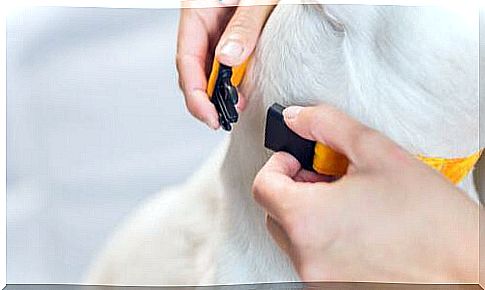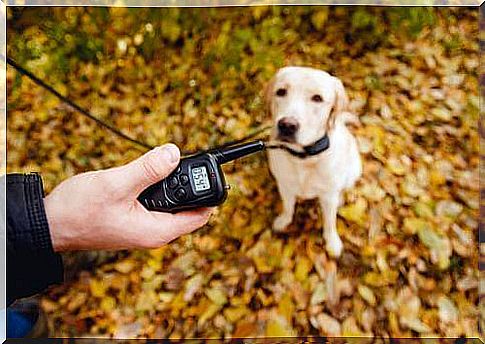What You Should Know About Bark Control Collars

Dogs are some of the most loyal and loyal pets. But among its many positive qualities, there are also some annoying behavior patterns. If you think about it, barking is probably high on the list. In this article we will tell you all about bark control collars.
About bark control collars
Bark control collars are designed to prevent dogs from barking. The Bark Control Collar works as follows: It is a collar that is equipped with a receiver and is placed around the animal’s neck.

The receiver senses the movements of the neck and reacts in a certain way depending on the type of collar. However, the throat is one of the most sensitive areas and therefore these collars can cause complex damage.
Types of Bark Control Collars
There are several types of bark control collars. The most commonly used are:
Bark control collar with spray
The bark control collar with spray is placed around the neck of the animal. As soon as the dog barks, the microphone picks up the sound and sends a signal.
The signal activates the release of the spray from the spray cartridge, which is located on the collar under the animal’s snout. This leads to a surprise that affects all four of the dog’s senses: hearing, sight, touch and smell.
Various studies have shown that the barking disappears partially in about 28% of the cases and completely in 70% of the cases. This type of bark control collar is the least harmful.
It does not cause any direct effects on the animal’s body, but rather sprays a harmless liquid. For example, you can use a collar with citronella spray, which is not very comfortable for the dog.
Electric bark control collars
The electric bark control collar works similarly to the bark control collar with spray, but only affects the animal’s sense of touch.
When the dog barks, the collar sends out a small electric shock, which acts as a punishment for the barking.
With this collar , there must be a gradation in the intensity of the electric shocks, since dogs react differently, similar to humans.

The triggering of the electric shock tends to be automatic and varies depending on the intensity and frequency of the barking.
For this reason it is important that the Bark Control Collar is adjustable. It is advisable not to use the Bark Control Collar all the time as the electrodes can cause necrosis in the dog’s skin.
Bark control collars and the limits of their effectiveness
All bark control collars are only effective to a limited extent. Therefore, one should also work on eliminating the cause of the barking. Otherwise, one only works on the consequences, but it does not solve the root of the problem.
Some dogs stop barking, but to compensate, they destroy things in their environment, urinate in the apartment or even injure themselves.
How do you find out the cause of barking?
Before considering the option of a bark control collar, you should identify the cause of the barking. Dogs bark to express different states of mind: joy, excitement, worry, etc.
The purpose of barking is always to convey a message. Some experts consider barking to be a kind of “safety valve to relieve stress and boredom”.
To identify the cause that is causing the dog to bark, one can go over a number of reasons the animal might be barking :
- Boredom. In response to the stress of loneliness, the dog barks to attract company.
- Communication with strangers. When people, other dogs, or other animals walk past their property, the dog barks to communicate with them. Or they express their frustration about it.
- Sounds. The slightest noise can be heard by dogs and they react differently to it. When the door is opened and its owner walks in, the four-legged friend can express its joy by barking.
- Attention. Your dog wants to be heard, so he does what it takes to do it.
- Compulsive behavior. The dog can bark when it feels uncomfortable, but also because it has become too used to the barking.
- Fear. When the dog is alone and scared, it barks to reassure you.
- Another possibility is that the dog communicates with its owners and the barking serves as a form of expression.
In summary, from all the information in this article about bark control collars, one can say that they are to be rated negatively for the dog.
Its use can help in the short term, but it can have a number of negative consequences in the long term. There are many other ways to address the excessive barking problem.









